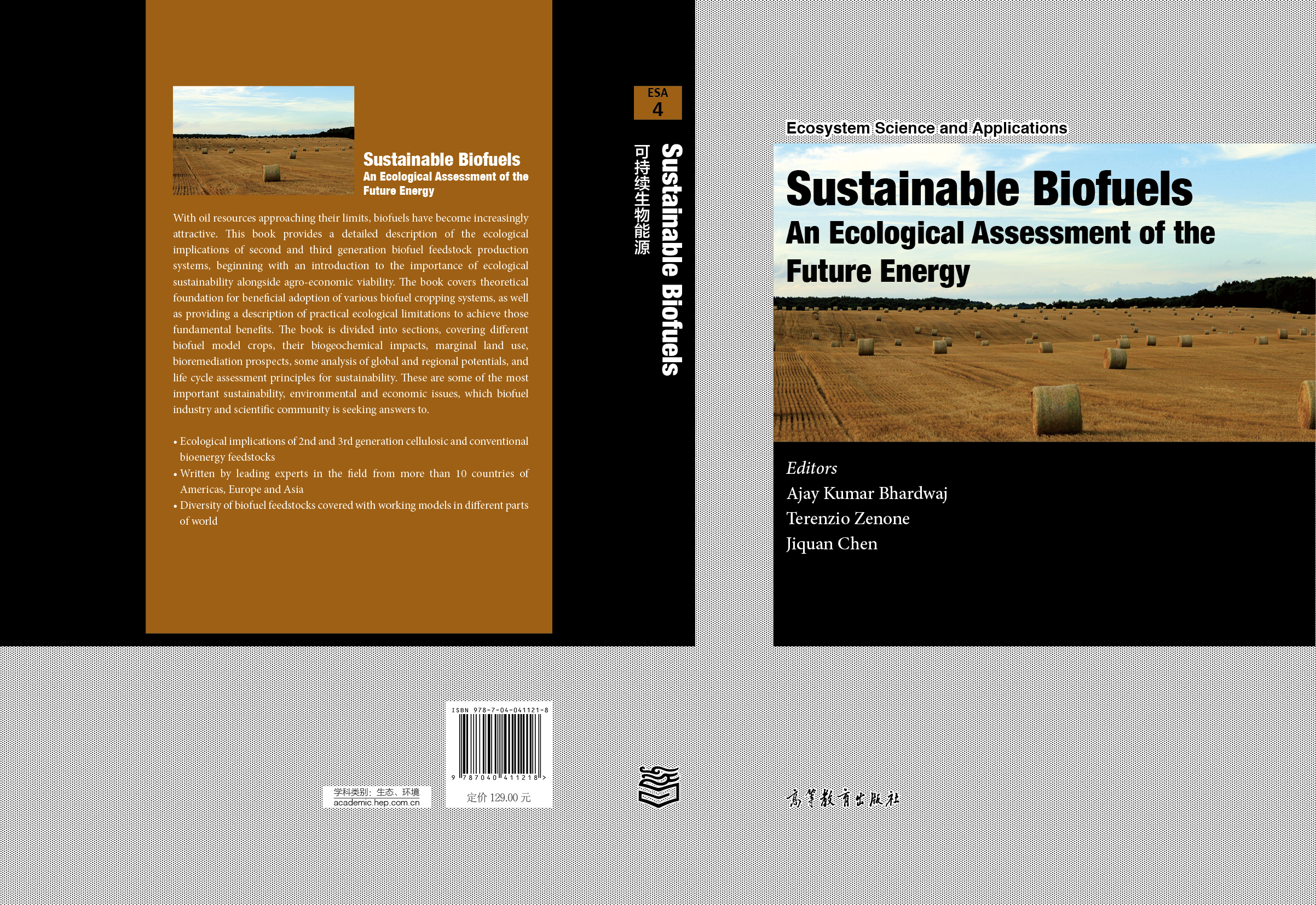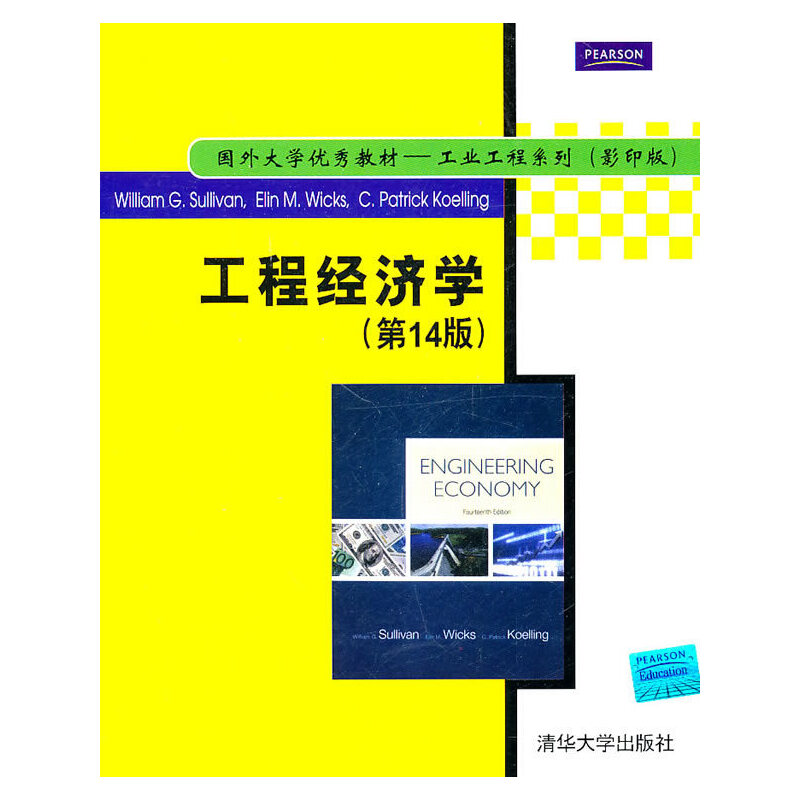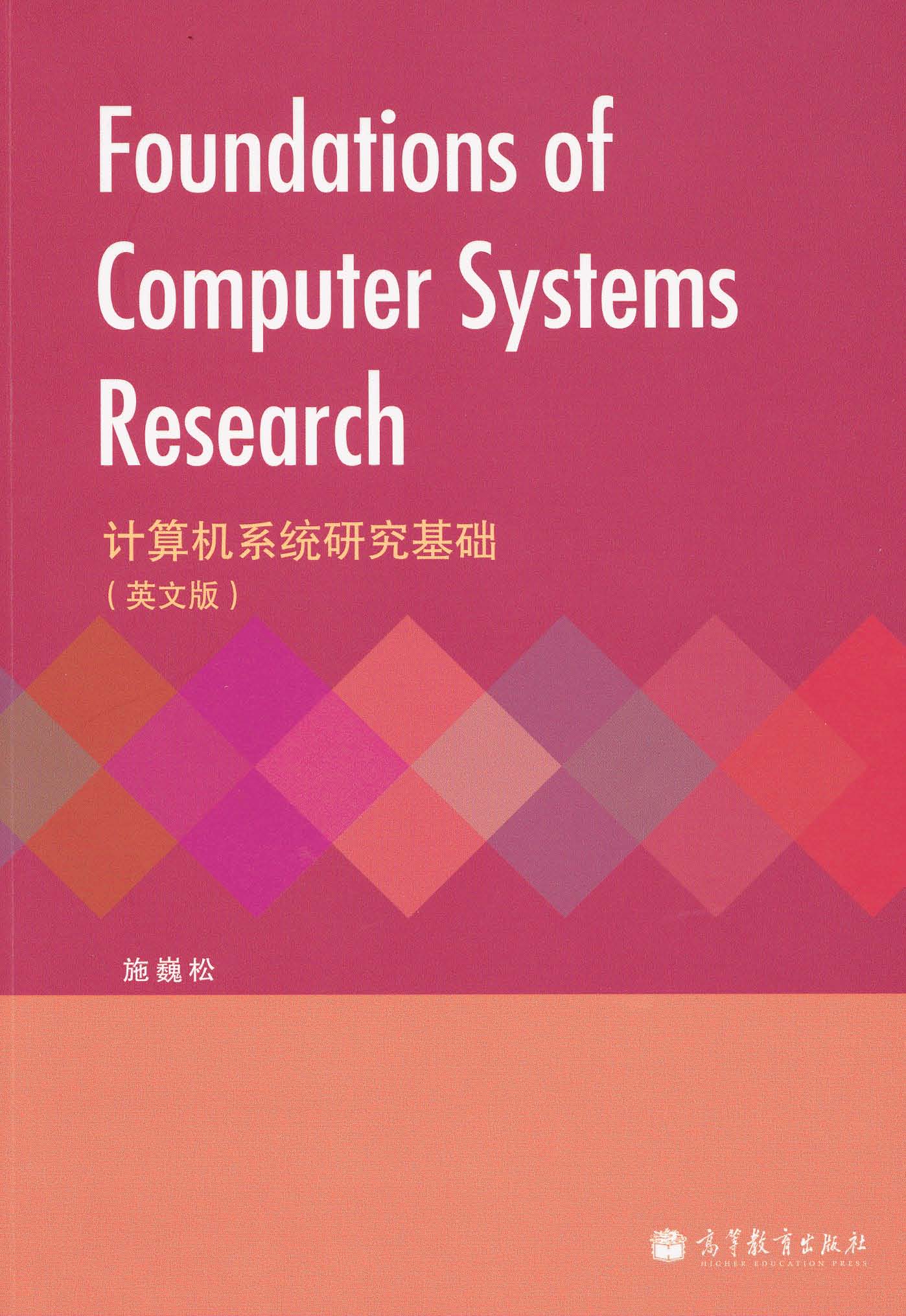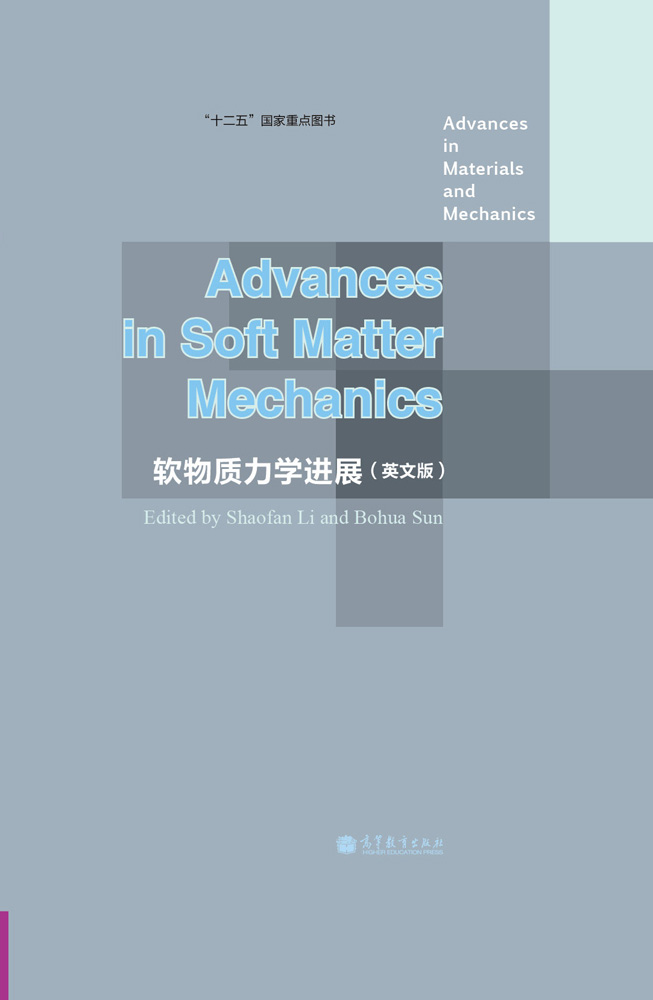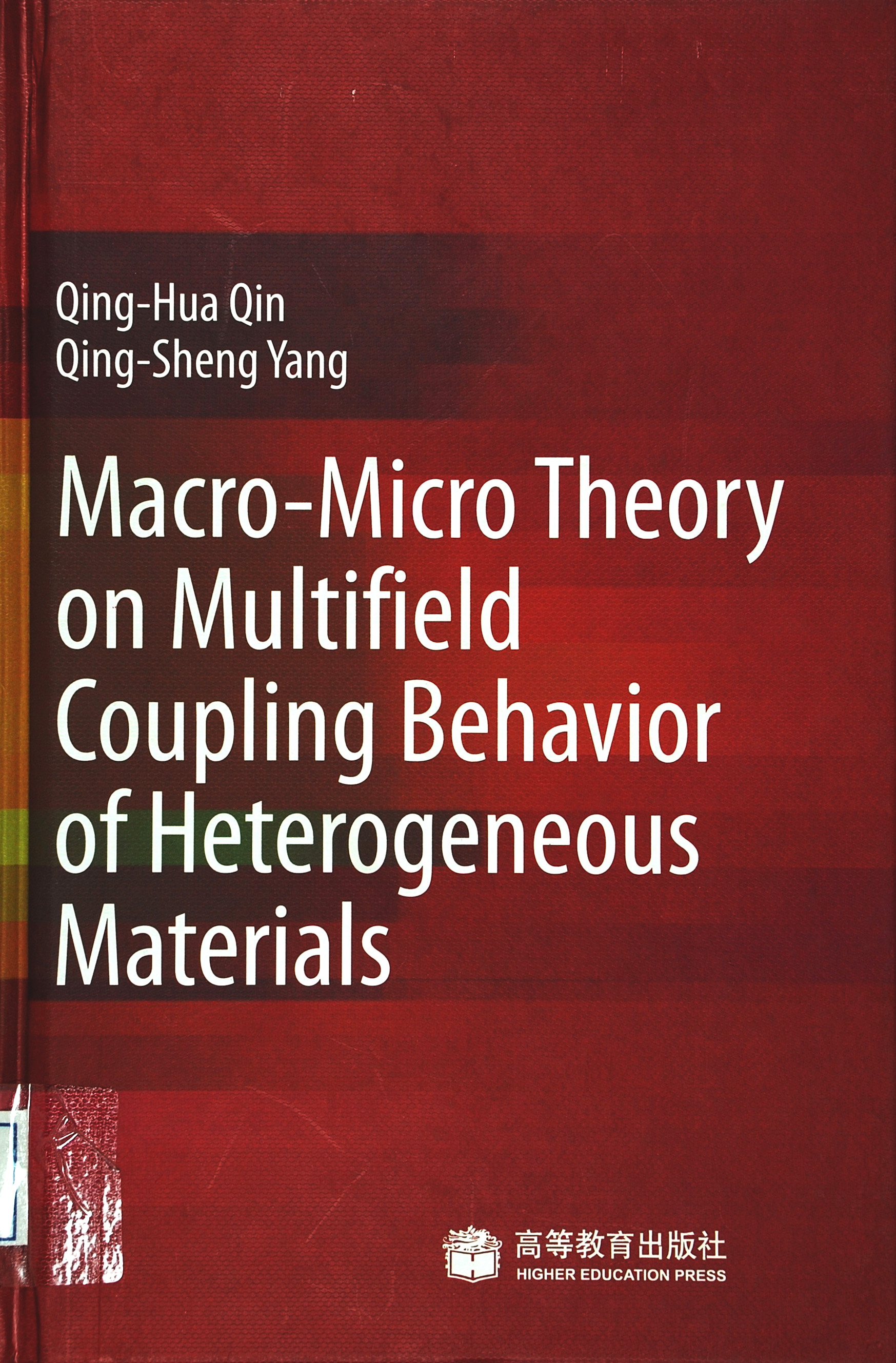可持续生物能源(英文版)
作者: Ajay K.Bhardwaj等
出版时间:2015-03
出版社:高等教育出版社
- 高等教育出版社
- 9787040411218
- 1版
- 150232
- 48266672-4
- 精装
- 16开
- 2015-03
- 500
- 346
- 理学
- 地质学类
- TK6
- 生态、环境、地学
- 研究生及以上
随着石油资源日益枯竭,生物燃料越来越受到青睐。本书详细描述了第二代和第三代生物燃料生产系统的生态影响,涵盖了多种易于被采用的生物燃料种植的理论基础,并说明了实现利益所需要的生态条件 。巴德瓦杰、泽诺内、陈吉泉编写的《可持续生物能 源(英文版生态系统科学与应用)(精)》分为几大部分 ,分别介绍了不同的生物燃料作物模型、它们的生物地球化学的影响、边际土地利用、生物修复的前景、可持续性和全球潜力评估的生命周期分析原理。这些都是生物燃料行业和科学界最关心的关于可持续发展 、环境和经济的重要方面。
前辅文
PartⅠ Introduction
1 The Sustainable Biofuels Paradigm
1.1 Biofuels: Opportunities and Challenges
1.2 The Sustainability Paradigm and Biofuels
References
PartⅡ Biofuel Crop Models
2 Switchgrass for Bioenergy: Agro-ecological Sustainability
2.1 Introduction
2.2 Energetic and Economic Considerations in Sustainability
2.3 Ecological/Environmental/Resource Considerations of the Sustainability
2.4 Managing Switchgrass for Bioenergy and Sustainability
2.5 Conclusions
References
3 Sugarcane as an Alternative Source of Sustainable Energy
3.1 Introduction
3.2 Energy Expenses in Sugarcane Production
3.3 Nutrient and Fertilizer Expenditures of Sugarcane
3.4 Sugarcane Bagasse: A Sustainable Energy Resource
3.5 Sugarcane Trash: A Potential Biomass for Sustainable Energy
3.6 Sugarcane Biomass for Biofuel Production
3.7 Conclusions
References
4 Jatropha (Jatropha curcas L.) as a NewBiofuel Feedstock for Semi-arid and Arid Regions and Its Agro-ecological Sustainability Issues
4.1 Introduction
4.2 Systematics and Global Distribution
4.3 Vegetative Growth and Sexual Reproduction
4.4 Optimal and Sub-optimal Climate and Growth Conditions
4.5 Propagation
4.6 Uses and Abuses of JCL
4.7 JCL as a Sustainable Alternative to Fossil Fuels
4.8 Significance of Irrigation and Fertilization for JCL Cultivation
4.9 Conclusions
References
5 Environmental Aspects of Willow Cultivation for Bioenergy
5.1 Introduction
5.2 Willow Plantations
5.3 Carbon Sequestration and Greenhouse Gas Fluxes
5.4 Conclusions
References
PartⅢ Biofuels and Biogeochemical Impacts
6 Short Rotation Forestry for Energy Production in Italy: Environmental Aspects and New Perspectives of Use in Biofuel Industry
6.1 Introduction
6.2 Ecological Services Provided by SRF
6.3 Biofuel Production and SRF
6.4 Conclusions
References
7 Populus and Salix Grown in a Short-rotation Coppice for Bioenergy: Ecophysiology, Aboveground Productivity, and Stand-level Water Use Efficiency
7.1 Introduction
7.2 Water Use of SRC
7.3 Water Use Efficiency of SRC
7.4 WUE and Related Ecophysiological Variables Literature Surveys
7.5 Case Study: Populus in the Bohemian-Moravian Highlands
7.6 Conclusions
References
PartⅣ Biofuels and Natural Resource Management
8 Afforestation of Salt-affected Marginal Lands with Indigenous Tree Species for Sustainable Biomass and Bioenergy Production
8.1 Introduction
8.2 Origin and Distribution of Salt-affected Soils in India
8.3 Properties of Salt-affected Soils
8.4 Natural Vegetation on Salt-affected Soils
8.5 Management Practices for Afforestation on Salt-affected Soils
8.6 Biomass Production
8.7 Bioenergy Production
8.8 Soil Amelioration
8.9 Conclusions
References
9 Bioenergy and Prospects for Phytoremediation
9.1 Introduction
9.2 Bioenergy Systems for Soil Phytoremediation
9.3 Bioenergy Systems for Water Phytoremediation
References
PartⅤ Life Cycle Assessment Principles
10 Eight Principles of Uncertainty for Life Cycle Assessment of Biofuel Systems
10.1 Introduction: Regulatory LCA
10.2 Eight Principles of Uncertainty for LCA of Biofuel Systems
10.3 Principle 1: Biofuel Production Is a Complex System of Systems
10.4 Principle 2: Standardized LCAMethods for Biofuels Do Not Exist
10.5 Principle 3: Empirical Data Are Scarce for Most Aspects of Biofuels
10.6 Principle 4: Local Biofuel LCAs Reduce Uncertainty and Errors
10.7 Principle 5: Sensitive Parameters Cause Order of Magnitude Changes
10.8 Principle 6: Indirect Emissions Are Numerous and Highly Uncertain
10.9 Principle 7: Transparency Is Essential for Regulatory LCA
10.10 Principle 8: Fossil Fuel Reference Systems Are Diverse and Uncertain
10.11 Conclusions
References
11 Energy and GHG Emission Assessments of Biodiesel Production in Mato Grosso, Brazil
11.1 Introduction
11.2 Study Area
11.3 Methods
11.4 Results
11.5 Discussion
11.6 Conclusions
References
PartⅥ Global Potential Assessments
12 Biomass Potential of Switchgrass and Miscanthus on the USA’s Marginal Lands
12.1 Introduction
12.2 Methods
12.3 Results and Discussion
12.4 Conclusions
References
13 Global Agro-ecological Challenges in Commercial Biodiesel Production from Jatropha curcas: Seed Productivity to Disease Incidence
13.1 Introduction
13.2 Standardization of Agro-technology
13.3 Global Seed Productivity
13.4 Techno-commercial Economics
13.5 Scope for Improvements
13.6 Disease Incidence
13.7 Soil Amelioration
13.8 Conclusions
References
Subject Index


